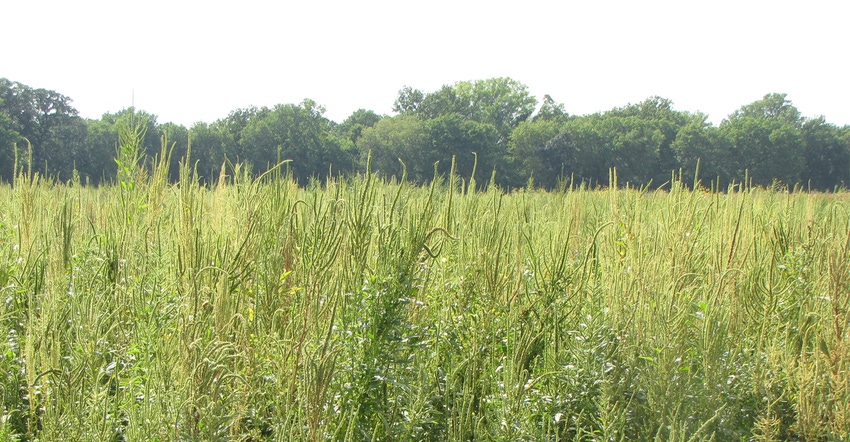
When the summer sun shines hot, the weeds flourish.
Whether it is one of the 12 weeds so pervasive that they are on the Kansas noxious weeds list, one of the many invasive plants that take over a pasture or grassland, or one of the troublesome weed species that have become resistant to common herbicides, the battle against weeds is one that never ends.
One of the problems comes from the all-too-real fact that one person’s weed is another person’s flower. Some of the most troublesome invasive weeds were imported to the United States in the belief that they would be valuable ornamental plants or useful for conservation purposes. Turns out they were not. Removed from the environment in which they had natural predators or other challenges, they flourished to the detriment of the native vegetation.
On the resistant list, three weeds stand out: marestail and pigweed across the state and kochia in the western half of the state.
“When I took this job in November of last year, I knew that herbicide resistant weeds would be a topic of concern,” says Sarah Lancaster, Kansas State University’s new weed specialist. “Farmers and Extension agents have both confirmed that marestail is difficult to manage in any no-till situation. And pigweed is a huge problem. It grows so fast and produces so many seed that is very difficult to stop. Resistant pigweed and horseweed are a lot of what has driven the adoption of the new dicamba products.”
That’s why, when the 9th Circuit Court of Appeals struck down the registration for three over-the-top dicamba products (Engenia, FeXapan, and XtendiMax), there were several days of panic in the ag industry before EPA and state agriculture departments issued clarifications that allowed farmers who had already purchased the products by June 8 to continue to use them until July 31. Ag retailers who had dicamba products on the shelves as of June 8 can continue to sell them until the end of July.
“The agribusiness industry has expressed confidence that the products will be available for use in 2021 and beyond,” Lancaster says. “The reading I’ve done says that the risk of widespread use may not have been adequately assessed. It will be interesting to see what happens.”
The conflict over the technology comes from instances where the herbicide drifted and damaged non-tolerant soybeans as well as other crops, including orchards. Researchers have since recommended changes in the application process as well as requiring the addition of adjuvants designed to reduce drift to spray tanks.
In Sedgwick County, Extension ag agent Jeff Seiler says that he had concerns about dicamba drift from the beginning.
“When you have a product that can cause problems for a neighbor’s crops or even a neighbor’s garden, you have to be very careful,” Seiler says. “I think the result at the end will be that applicators will have to really pay attention to the rules. But the concern is that those labeling requirements will have to be so stringent that it will reduce the use of the products just because it is gets to difficult to use it within the rules.”
Lancaster says producers should also be keeping an eye on another ruling that may come from the 9th Circuit as well, dealing with 2,4-D and the crops that carry a trait to make them tolerant of the popular herbicide.
“That will be a wildcard,” she says. “The factors that caused the ruling against dicamba are not as much in play in this one. There is a another set of criteria that they are looking at. I think we are going to have to rethink how we manage things to get the most benefit from these technologies and how we can use them the most wisely in a given situation.”
Read more about:
DicambaAbout the Author(s)
You May Also Like






